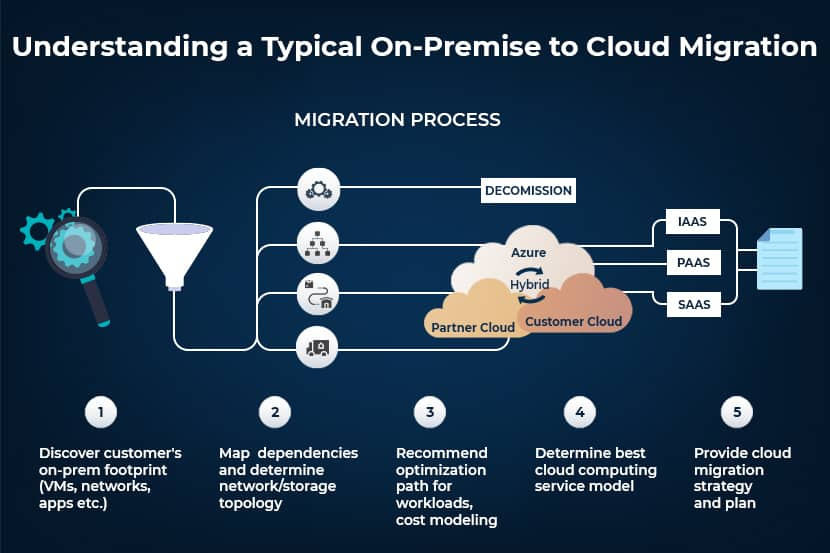Storing data and running applications and workloads in public cloud services can relieve the burden of on-premises IT systems. Migrating from private data centers to cloud service platforms can be a big undertaking of time and effort, but new innovations such as Nutanix Cloud Clusters (NC2) are making it quicker and easier than ever before.
IT leaders can develop a more informed migration strategy by understanding how new technologies facilitates a smoother transition to modern infrastructure.
Migrations are always hard, according to Steve McDowell, principal analyst and founding partner at NAND Research.
“Moving apps from your server to the cloud can be a terrifying proposition,” he told The Forecast.
“The companies that do well are the ones with better lines of communication between IT and the business units,” he said.
Cloud Migration Promises a Lucrative Future
Cloud migration is the process where IT operations move from an on-premises or private cloud data center to a public or hybrid cloud operation. This can include the company’s applications, data and other digital assets or workloads.

Image Source: Spiceworks
Five simplified steps in the migration process from on-prem devices to a cloud computing service model
Migrating one’s processes into a public cloud allows for applications to draw from cloud computing power offered by the third-party platform provider. Different platforms provide varying levels of service regarding performance, security and cost. Making the right choices can greatly benefit the business both financially and in terms of customer satisfaction.
Many organizations are choosing the pay-per-use model employed by cloud service providers. Rather than investing upfront in physical infrastructure that may provide more processing power than is needed while also consuming excessive energy, relying on public cloud services can relieve capital expenditures and bring modern, flexible capabilities to an organization’s unique and changing needs.
Cloud migration can also refer to the act of moving data from one public cloud to another in a multicloud environment. This serves as a powerful method of diversification that ensures greater service reliability and uptime for an enterprise’s clients in the event that the cloud infrastructure provided by another vendor experiences an outage.
Cloud Migration Pain Points
The 2023 Nutanix Enterprise Cloud Index (ECI) surveyed IT decision-makers around the world showed nearly all (99%) of the 1,450 of the respondents moved applications to a different infrastructure in the past year; the reasons ranged from improving security posture to controlling IT costs. Their responses showed that mixed-infrastructure usage will reach nearly three-quarters (74%) of global enterprises within three years. Managing mixed infrastructures can be challenging, though, as 94% of respondents agreed that a having single, unified place to manage applications and data across their diverse environments would be ideal for their organizations.
Cloud-native development is one possible solution for making these noteworthy problems easier to address. Applications tailor-made to exist in current and future cloud environments are naturally easier to integrate, monitor, and manage both during and after cloud migration.
However, there will continue to be a need to overcome the obstacle of moving mission-critical legacy processes to the cloud.Enterprises want to reduce the complexity of migration and the continuous deployment and management requited thereafter.
This has led many to call for a way to flexibly extend their existing infrastructure into the cloud with simplicity, scalability, and minimal downtime. This means being able to run their owned data center operations in a public cloud service whenever it makes business sense to do so.
Nutanix Cloud Clusters Simplifies Complexity
Many enterprises are already using Nutanix Cloud Clusters (NC2) to do just that.

The need for increasingly large and complex networks consisting of multiple clouds from various vendors necessitates a method for managing all of that infrastructure and the applications running therein. NC2 streamlines the configuration and replications of a private cloud data center operation and allows it to run and be managed across multiple cloud almost as if it were a single cloud.
Scalability remains a key selling point for the platform as it strives to accommodate the needs of users who require the ability to scale up or shrink down in accordance with the rapidly changing demands and costs of running a modern IT business.
The agility inherent in using NC2 enables swift and reliable cloud migration at the client organization’s behest. Bidirectional portability makes it easy to move data and apps back and forth between clouds as necessary without costly refactoring or disruptive amounts of downtime.
Use Cases
Business leaders can review real use cases to understanding how other enterprises benefit from implementing NC2 in their migration strategies. In some cases, adding capacity or releasing new applications could’ve been costly with long timelines for completions.
Enterprises are also using NC2 to ensure business continuity and service availability. The Nutanix stack comes equipped with tools and protocols that enable the public cloud to act as a backup or replication site, even for on-premises processes in the hybrid environment. This guarantees more uptime while also providing disaster recovery measures in the form of an agile migration solution.
Some use NC2 because it’s compatible with AWS and features native networking and regional availability to further enhance the performance of applications in the resulting hybrid cloud. Others use it to run their Nutanix platform on Microsoft Azure.
Moving Forward
It can be difficult for business leaders to buy into the idea of adopting a hybrid cloud approach when doing so historically costs significant time and money, not to mention manpower in the form of expertise that is rare or fleeting. New software such as NC2 provides new options that can alleviate concerns and provide a single, easy-to-use data center management panel that works across different IT infrastructure.
Companies beginning the process of migrating to hybrid multicloud environments are sure to experience growing pains in their internal productivity, customer relations, and overall financials, but innovations such as NC2 are providing relief.
Learn more about the software and services that can hasten the adoption of a hybrid cloud as well as the security concerns to address throughout the transition.
Michael Brenner is a keynote speaker, author and CEO of Marketing Insider Group. Michael has written hundreds of articles on sites such as Forbes, Entrepreneur Magazine, and The Guardian and he speaks at dozens of leadership conferences each year covering topics such as marketing, leadership, technology, and business strategy.
© 2023 Nutanix, Inc. All rights reserved. For additional legal information, please go here.







